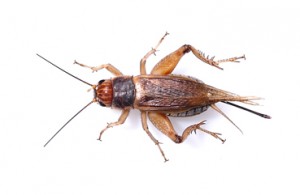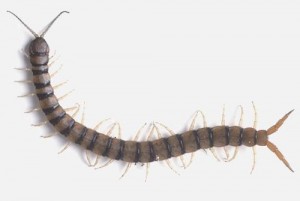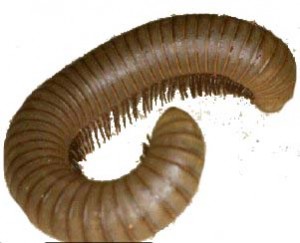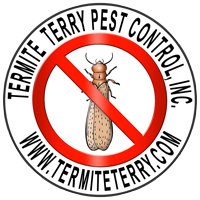Perimeter Invader Pest Control
| Crickets: Large insects (usually over 1/2 inch long) sometimes winged but mostly using powerful hind legs for hopping and jumping. Noted for the chirping “song” of adult males. They usually feed on vegetation outdoors but invade buildings during droughts and cold weather, often attracted by lights, and eat foodstuffs, paper and clothing. | |
| Earwigs: Adult insects up to 1 inch long, characterized by pairs of forcep-like organs of defense at end of body. They scavenge at night, hiding under porches, rocks, compost, litter, etc. in daytime. Feed mostly on vegetation outdoors, but often invade and eat stored food indoors. | |
| Ground Beetles: Large, long-legged, mostly flightless insects, often black or metallic blue or green color. They actively chase insect prey and often enter homes through doorways. | |
| Sowbugs and Pillbugs: These are not insects but crustaceans, related to crabs and lobsters, adapted to life on land. They have 7 pairs of legs and an oval body up to 3/4 inch long covered in 7 “armor plates”. They feed on decaying organic matter, especially under logs and other moist locations, but frequently invade damp basements. | |
| Centipedes: Flattened, elongated creatures up to 6 inches long, with one pair of long legs on most segments, antennae, and powerful poison jaws. These fast-moving predators catch and kill insect prey in damp situations indoors and outdoors. | |
| Millipedes: Tube-shaped bodies, 1 to 2 inches long, with two pairs of legs on most segments. Slow-moving creatures which mostly feed on decaying vegetation in damp areas outdoors, but sometimes invade homes, especially in the fall. | |
| Scorpions: Eight-legged creatures, related to spiders, mostly 2 to 3 inches long, with a pair of large pincers at front and a stinging tail. Found under tree bark, rocks and logs, especially in South and Southwest but as far North as Canada , feeding on insects. They commonly enter homes where they can survive without feeding for months. |
What Can You Do Against Perimeter Invaders?
Fully effective pest control measures require expert knowledge of each pest. While the details vary with each pest situation, the main focus will generally be on outdoor measures aimed at preventing pest buildup and pest entry. Pesticides can play an important role in the fight against perimeter invaders. However, many over-the-counter pesticides do not perform well when used on porous outdoor surfaces, such as soil, wood and concrete. Also, the performance of most pesticides will be adversely affected by outdoor conditions, especially rainfall and ultraviolet light. In addition, special pesticide formulations or application techniques may be necessary outdoors to achieve control without harming plants, wildlife or groundwater resources. For these reasons, the selection and use of pesticides against perimeter invaders is best left to professionals. However, here are 10 specific nonchemical measures you can carry out that will discourage perimeter invaders and complement measures taken by professional pest control operators.
10 Things You Can Do
1. Keep lawns cut short and trim bushes and trees back from the building to reduce cover for pests.
2. Keep gutters and outside drains clear and ensure proper grade against foundation walls to reduce moisture available to pests.
3. Maintain a dry, weed-free, bare strip of concrete or gravel about 3 feet wide around the foundations to create an inhospitable zone for pests.
4. Remove outside accumulations of leaves, lumber, etc., which provide cover and a moist microclimate for pests.
5. Store firewood off the ground and away from the house to reduce the chances of it becoming a “beachhead” for invading pests.
6. Remove unnecessary exterior lights which attract pests, especially near doors and windows. Where exterior lighting is necessary, use lamps with minimal attractancy to pests (e.g. high pressure sodium vapor lamps), and preferably mount them away from the walls, on posts, etc.
7. Screen windows and vents and caulk crevices through which pests might enter.
8. Ensure exterior doors shut tightly; tension strips or sweeps to keep out cold will also help exclude pests.
9. Always keeping doors shut when not in use, perhaps with self-closing devices, will make pest entry harder.
10. Check firewood, patio furniture and cut flowers before bringing them indoors, and remove any “hitch-hiking” pests.
NOTE: Additional nonchemical measures may be appropriate. For instance, placing the legs of a crib in wide-mouthed glass jars can stop scorpions crawling up. Altering irrigation of your lawn and ornamentals from evening to morning will discourage all those pests which are active and seek moisture at night, Professional pest control operators may be able to advise you on other things you can do in your particular circumstances to fight perimeter invaders.
10 Things Everyone Should Know About Perimeter Invaders
Did You Know?
1. More than 9/10ths of all known creatures are insects, and most yards contain hundreds of thousands of individual insects.
2. There are more than 1 million species of insects, and the total weight of insects on our planet has been calculated to be more than 10 times the weight of all human beings.
3. Your home can be invaded by creatures which fly, walk, climb, jump or burrow.
4. Some occasionally invading pests cause painful stings or bites and, in the case of some scorpions, even death may result particularly among the very young or elderly.
5. Some perimeter invaders, such as earwigs can not only eat human food but also contaminate it with their own body parts and excretions.
6. Invading pests with chewing mouthparts, such as crickets and many beetles, can cause severe damage to valuable documents and clothing.
7. Some invaders, especially millipedes and earwigs, emit foul odors which can taint premises and upset occupants.
8. Pests such as millipedes, earwigs and crickets, sometimes invade buildings in hordes of thousands, particularly during droughts or cold weather, causing major visual annoyance, debris and disturbance of occupants.
9. Some perimeter invaders die of starvation or desiccation soon after entering homes, but others such as some crickets and beetles can survive and become a permanent nuisance.
10. In some areas, perimeter invaders such as earwigs have built up to such nuisance levels that property values have fallen.
If you’re interested in the Perimeter Invader Pest Control Service offered by Termite Terry please feel free to call us at 949-631-7348 in order to set up an appointment or use our online Order Form and we’ll get back to you as soon as possible.







